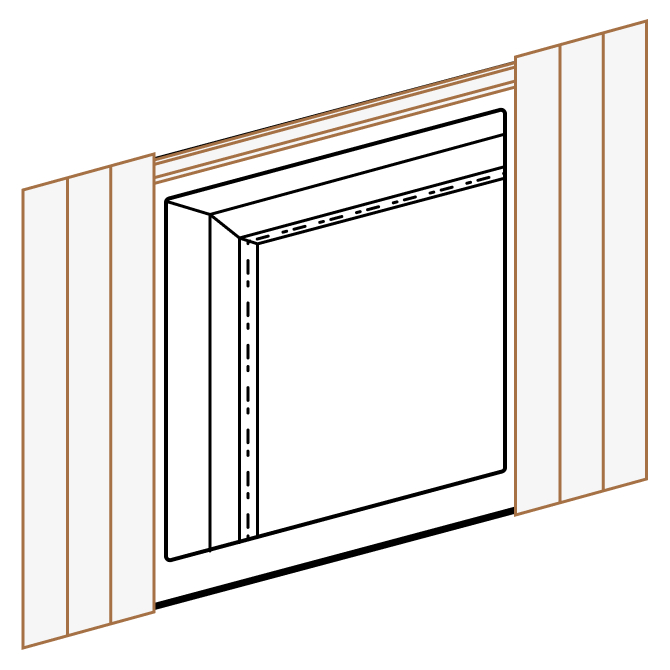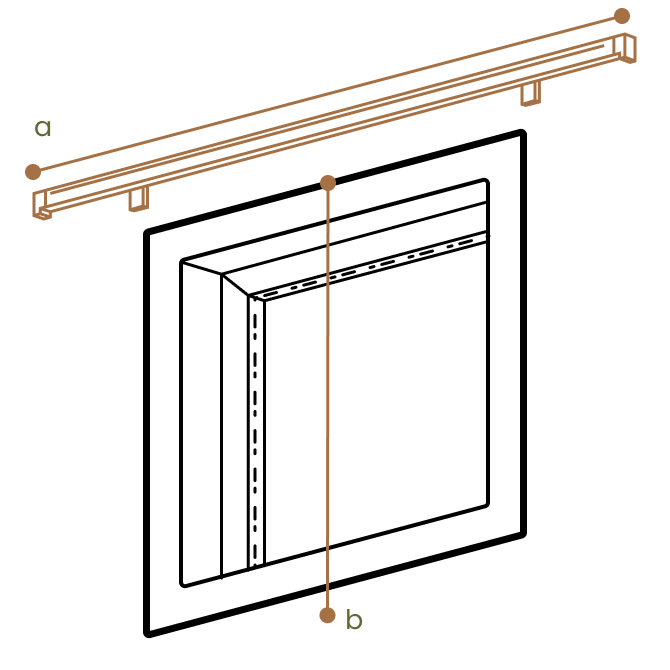Follow this method to measure your windows for custom-made curtains, including sheer, blockout and thermal.
You will need
01
A metal tape measure
02
Our measuring sheet
03
Pencil or pen
Things to consider
Would you prefer a pair of curtains that frame the window and meet in the middle when closed, or a single curtain that can be pulled from one side to the other?
Take note of any obstacles in the path of your curtains, such as furniture or wall heaters, and make necessary adjustments to the width and length accordingly.
Illustrated steps

How to measure
To determine the right measurements for your curtains, we employ a simple ‘width x drop’ method. The width corresponds to your track length, while the drop depends on both where you hang your track and where you desire your curtains to end.
When ordering custom-made curtains, all you need to supply is the track width and drop. We will then calculate the precise amount of fabric required, tailored to your track width and preferred pleating style.

Width (a)
To determine the width, measure your curtain track or rod from one end to the other. If you’re using rods, measure from the inner edge of any finials (the decorative end pieces). If you don’t have an existing track or rod, please refer to our measuring instructions below.
Drop (b)
For the drop measurement, measure from the top of your curtain track or the underside of your rod down to the point where you want your curtains to reach, and make a note of this as your curtain drop.
Your options for the drop measurement include:
- Below the sill, with 200mm as a good general guideline.
- To the floor.
When considering a floor-length curtain, keep these options in mind:
- Deduct 5 – 10mm if you prefer your curtains to float just above the floor, not quite touching it.
- Leave the measurement as is to have the curtains skim the floor.
- Add 10 – 20mm to create a heavier drape, enhancing heat retention.
- Add 200mm to allow the excess fabric to pool on the floor, creating a luxurious look.
Measuring for tracks and rods
When measuring for tracks and rods, we suggest extending them beyond the sides of your window. This allows the curtains to stack off the glass, permitting more light to enter the room, reducing fading at the curtain’s edge, and creating the illusion of larger windows.
Ensure you have enough space on the side of the window where the curtain will stack when open. The amount of space required may vary based on window size and curtain weight:
- For a standard 2,500mm width window, measure the window’s width and add at least 600mm (300mm on each side).
- If you plan to stack a single curtain all on one side, add 600mm to your track length. Position your track 50mm to one side of the window and allocate 450-550mm for the stacking side.
- Be mindful of potential obstructions such as cupboards or heat pumps. If you lack sufficient wall space beside the window for stacking, measure the available space and select a pleat style that uses less fabric, requiring less stacking space, such as a single pleat or reverse single pleat.
For fixing your track or rod, consider the following options:
- 100mm above the top of the window frame (recommended): This is a commonly recommended placement for your track or rod.
- Halfway between the top of the frame and the ceiling: Placing it at this height can create a balanced look in the room.
- Just below the ceiling (creates the illusion of height, especially when curtains are drawn closed): This positioning can give the illusion of higher ceilings, particularly when the curtains are drawn closed.
- At the top of the architrave or frame (recommended only when space above is limited): If there is limited space above the window, this option can work well.
Regarding fullness and heading styles:
Curtains have additional fabric to create “fullness” or “gather” when closed, which provides better insulation and a softer appearance at the window. The heading style you choose will determine the amount of fullness your curtain achieves. Here is a chart for reference:
- Single Pleat: 50-60% fullness
- Double Pleat: 75-100% fullness
- Triple Pleat: 110-120% fullness
- Reverse Double Pleat: 75-100% fullness
- Pencil Pleat: 80-100% fullness
- S-fold: 75-100% fullness
Choose a heading style that aligns with your preferred level of fullness and the overall look you want to achieve for your curtains.